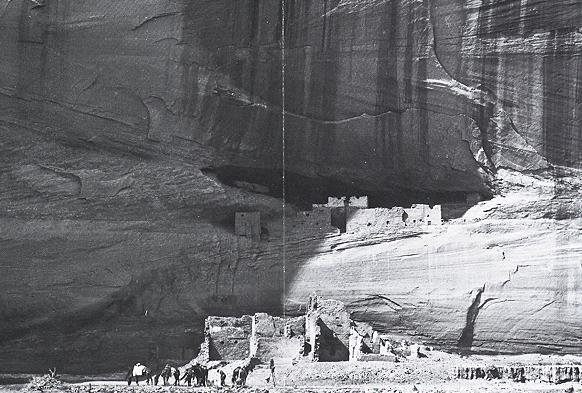
Trips to the Navajo Country, 1920's
Listing sponsored by
KappaElastin™
Scientific
Breakthrough. No Shots
Science response to skin aging.
www.kappaelastin.com
Phone: 520-586-3666 --
TTY:
Its philosophy embraces the belief that museums provide one of the primary means of preserving and interpreting the cultures of prehistoric, historic, and contemporary peoples. The Amerind pursues a policy of scientific research as the obvious means for increasing our knowledge of the cultures of the Americas.
Amerind firmly believes that the resultant findings (of scientific inquiry) should be widely disseminated to both the scholarly community and the general public through a variety of activities, displays, and publications.

Trips to the Navajo Country,
1920's
The Amerind is committed to interpreting this diversity in both the archaeological and ethnographic context to create a better understanding among peoples of contrasting cultural backgrounds.
Collections interpreting prehistoric, historic and contemporary Native American cultures; archeology of the American Southwest and northern Mexico; gallery of paintings and sculpture by Native and Anglo-American artists.
The Amerind Foundation Museum, is a private, nonprofit, archaeological and anthropological research facility and museum. Devoted to the study of Native Peoples of the American Southwest and Northern Mexico, the name "Amerind", a contraction of American Indian, illustrates the purpose of the museum.
Located in the rural and beautiful southeastern corner of Arizona, the research facility and Museum exists to educate and inform an interested public about American Indian prehistory and history. Exhibits highlight Native American material culture, art, crafts, and societal structure.
The Amerind Museum maintains one of the largest private collection in the United States. Supported entirely by its private endowment and donations the Amerind seeks no outside governmental funding. Collections are concentrated on the peoples of the prehistoric Southwest and Northern Mexico, but range from the Arctic to South America. With permanent holdings currently numbering in the tens of thousands of objects, the Amerind still continues to collect and preserve items of the past for the future
The
At a time when high speed digital imagery is taking over the world of photography, Auerbach reverses the modern trend and turns to the classical realm of the large format camera and handmade platinum photographic papers. Using the quality of chiaroscuro, or contours modeled by light and dark values, the unique patinas and three-dimensional qualities of Auerbach’s photographs create images that fall somewhere between the charcoal sketch and the photographic palette. Auerbach has also developed the first autostereoscopic multidimensional platinotype in the history of photography, and an example of this method will be on exhibit in the Amerind show.
In
its 65th year as an anthropological research institution, museum, and
art gallery, the Amerind Foundation has worked closely with the artist to
assemble a superb collection of Native American portraits for the show. Representative images include
Navajo, Apache, Tohono O’odham, Arapaho, Assiniboin, and
Tours and groups should phone ahead to coordinate arrival times with the Museum staff (520-586-3666).
The Amerind Museum is located in the southeastern corner of Arizona, just off of Interstate 10.
From Tucson the Amerind is approximately 60 miles (an hour's drive) east. From Phoenix it is about a three hour drive.
The Foundation offices and Museum are located near Interstate 10 in Texas Canyon between Benson and Willcox. Take the Dragoon Road exit (318) and proceed east one mile to the Amerind Foundation turnoff. Turn left at the entrance sign and proceed to the museum.